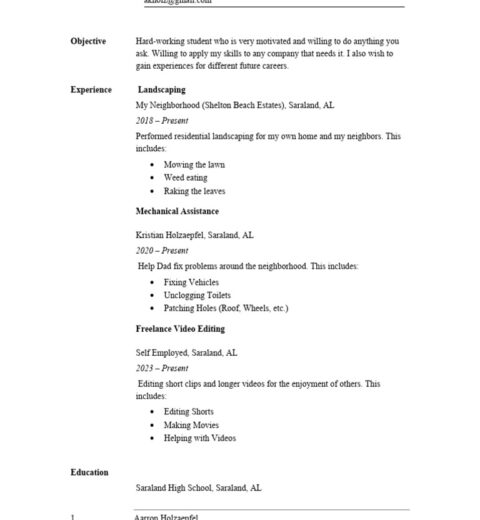When crafting a resume, particularly in a competitive job market, it becomes essential to articulate your career advancements with clarity and precision. Promotions signify growth, capability, and experience, and showcasing them effectively on your resume can distinguish you from other applicants. However, it can be challenging to present this information without causing visual clutter or overwhelming potential employers. This guide offers comprehensive insights into how to exhibit promotions on your resume in a manner that is both organized and impactful.
Understanding the Importance of Showcasing Promotions
Promotions are more than mere acknowledgments of your accomplishments; they are indicators of your professional trajectory, skill enhancement, and readiness for increased responsibilities. Effectively incorporating promotions into your resume demonstrates not only your commitment to growth but also your ability to adapt and excel in varying roles. However, the challenge lies in portraying these advances succinctly, ensuring that your resume remains readable and professionally appealing.
1. Structuring Your Experience Section
This section often serves as the heart of your resume, detailing your employment history, positions held, and the functions performed. Begin by listing your most recent job first, following a reverse chronological order. For each position, include the following:
- Job Title: Clearly state your title as it read during your employment.
- Company Name: Include the company’s name, followed by the location.
- Dates of Employment: Use a format that includes the month and year, highlighting any gaps that may require justification.
To keep the information streamlined, consider using subheadings within your employment section. For example, if you received a promotion from Junior Analyst to Senior Analyst, denote both titles under the same employer. This structure allows for clarity without detracting from the overall aesthetic of the resume.
2. Incorporating Promotions Seamlessly
When listing promotions, you may use a combination of formatting techniques to show your upward trajectory without overcrowding the section. One effective method is to highlight the promotion itself. For instance:
Company Name - City, State Junior Analyst (Month Year - Month Year) • Assisted with data analysis and reporting. Senior Analyst (Month Year - Month Year) • Led project teams and improved data processes.
This format visually separates your roles, making it easier for hiring managers to notice your advancement while maintaining brevity. It provides a clear representation of your career path while preserving the necessary details related to each role.
3. Emphasizing Achievements over Duties
When detailing each position, prioritize achievements over responsibilities. Accomplishments demonstrate your capabilities and the value you bring to an organization. Use metrics, percentages, or other quantifiable results to enhance the impact of your achievements. For example:
• Increased sales by 30% over one year, exceeding targets consistently. • Developed a new training program that reduced onboarding time by 25%.
This not only illustrates the significance of your promotions but also presents you as a results-driven candidate who is focused on contributing positively to the company.
4. Utilizing a Skills Section
A skills section can bolster your resume by providing a quick overview of the competencies that supported your promotions. Tailor this section to reflect the abilities that yielded your growth. For example:
Skills: • Data Analysis • Strategic Planning • Team Leadership • Process Improvement
This section can help hiring managers quickly discern your areas of expertise, reinforcing the narrative of your professional development.
5. Avoiding Common Pitfalls
While articulating promotions effectively, it’s crucial to steer clear of clutter and redundancy. Here are some common pitfalls to avoid:
- Excessive Detail: Avoid adding lengthy descriptions of every task performed in each role. Summary statements and quantified achievements often suffice.
- Overlapping Responsibilities: If roles had similar duties, focus on distinguishing unique contributions for each position to highlight your growth.
- Unnecessary Jargon: While terminology can add flair, excessive jargon can alienate readers. Aim for a balance that engages without overwhelming.
6. Tailoring for Each Application
No two job applications are identical. Tailoring your resume for each position you apply for will enhance its relevance. Pay attention to the specific qualifications and experiences highlighted in the job description, ensuring that the promotions you showcase align with these requirements. This extra step not only improves your chances but also demonstrates your keen attention to detail and interest in the specific role.
Conclusion
In conclusion, effectively showcasing promotions on your resume requires a careful balance of clarity, brevity, and relevance. By structuring your experience section thoughtfully, emphasizing achievements, and avoiding common pitfalls, you can create a powerful narrative of your professional growth. Remember that your resume is your opportunity to tell your story—make it compelling, and let your career advancements shine without cluttering the message. A well-crafted resume that presents your promotions can significantly influence the trajectory of your job search and set you on the path to achieving your professional goals.




